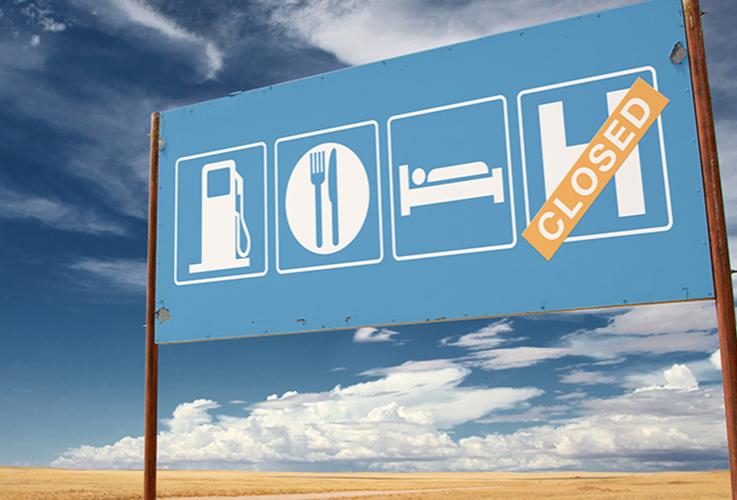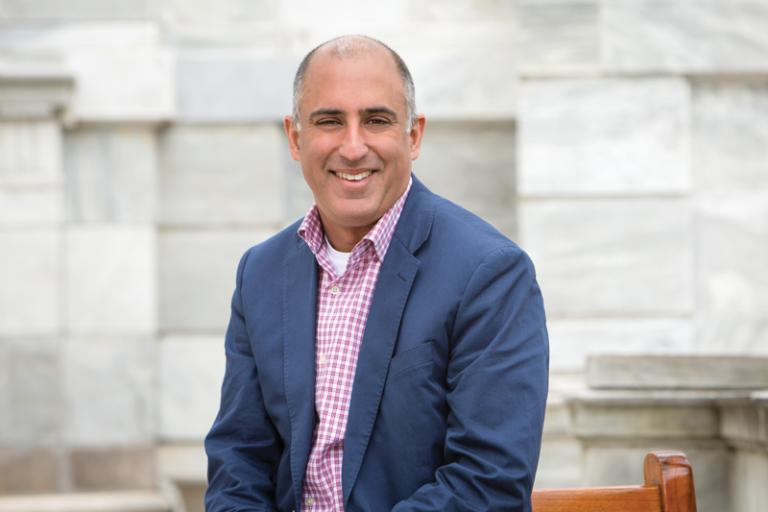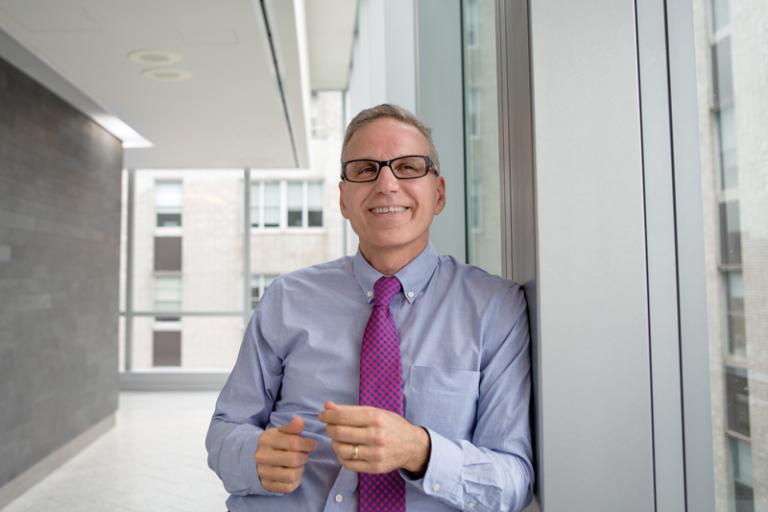If You Build It
Rural hospitals are closing, but those that remain are reshaping and innovating
- 11 minute read
- Feature

The term “rural” conjures a range of landscapes across this nation, those diamond deserts, redwood forests, golden valleys that Woody Guthrie sang belonged to all of us. It is a big country, but it’s not an empty one. Twenty percent of the nation’s population lives in regions outside major metropolitan areas, according to the 2010 U.S. Census. These regions, however, are not thriving, and towns still struggle to recover from recent economic downturns. And rural residents, compared with their urban counterparts, tend to be poorer and older, to live alone, and to be without health insurance, according to the American Hospital Association.
Layered onto the challenges of living in remote locations with fragile local economies is the patchwork of health services that make up the rural health care infrastructure. This hospital system has grown organically throughout the five-decade existence of an oversight group, the Centers for Medicare and Medicaid Services (CMS). Although rural hospitals have been shaped and guided by a body of regulations, politics, and market forces, they have also been plagued by a sustainability problem, one that’s familiar to any business: not enough customers.
Volume simply isn’t high enough for health care economics to work.
There have been efforts to divorce hospitals from the burden of volume-based economics. In 2010, the Patient Protection and Affordable Care Act began to reward value, not volume. Many rural hospitals, however, were too small, financially tenuous, technologically bereft, or understaffed to benefit from these programs, according to a 2016 report by the U.S. Department of Health and Human Services, which focused on rural hospital participation in value-based purchasing programs. During the past few years, however, rural hospitals have begun using ACA programs and other innovations to simultaneously drive up volume and value. They’ve accomplished this by improving access to care, expanding capabilities, and revamping clinical decision making.
The innovations these hospitals have implemented run the gamut from value-based payment models to the use of telemedicine to provide patients with access to specialty care to new models of primary care that exist not in hospitals or doctor’s offices but in retail stores. Together, these innovations have the potential to transform the current fragmented and, in some cases, crumbling, rural infrastructure into a set of flexible, capable, and interconnected systems that will best serve the medical needs of rural populations.

Fluttering Pulse
Seventy years ago, a strong economy, coupled with the practice of requiring extended bed rest during recovery from illness, injury, surgery, and childbirth, led to a hospital-building boom in this country. With medical advances, the need for extended hospitalizations—and hospital beds—has dropped, particularly in rural hospitals. So has the revenue of these hospitals.
Eighty rural U.S. hospitals have closed since 2010, a hemorrhage that began as a trickle in the 1990s. Another 673—a third of the rural hospitals in the country—are on the brink of closing, says the National Rural Health Association (NRHA). Such closures exacerbate the economic decline in rural areas: When a rural hospital closes its doors, per-capita income drops, local unemployment rises, and rural primary care doctors and nurses lose the place where they have practiced.
“If you close a hospital,” says Brock Slabach, senior vice president of member services at the NRHA and a former rural hospital administrator, “you essentially terminate the employment of all the physicians and nurses in the community. Once they leave, they do not come back.”
To help keep small hospitals that serve isolated rural communities afloat, a special Medicare reimbursement program, created by the 1997 Balanced Budget Act, extends additional funds to these “critical access hospitals,” ensuring that emergency services remain available. Despite such support, critical access hospitals, some with just ten beds, have higher mortality rates for patients with heart attacks, heart failure, and pneumonia compared to patients in other hospitals, according to research published in the Journal of the American Medical Association in 2013 by cardiologist Karen Joynt, an HMS assistant professor of medicine who recently relocated to Washington University in St. Louis. In a 2011 JAMA paper, Joynt reported that these hospitals are also less likely to have intensive care units and cardiac catheterization capabilities or to have implemented electronic health records.
Joynt’s research underscored the inadequacies of the rural infrastructure a fact that led many a rural doctor to contact her, voicing frustration over her findings. But Joynt says the findings also shine a light on the nearly impossible job rural hospitals are trying to do.
“Imagine being a rural emergency physician,” says Joynt. “You have to know everything. On your own.”
Joynt came face to face with the reality of how location can play a role in what level of care is easily available. A few years ago, her mother had a heart attack on a road trip through northwestern Nebraska. Her mother’s episode happened to occur near one of the few hospitals in the region that had a cardiac catheterization lab, so she received expert care. But, Joynt adds, if that episode had occurred a few dozen miles to the south, where such facilities do not exist, her mother might not have survived.
The stakes are high for hospitals, too. For a hospital with few cases per year, a single death pushes quality statistics down. And for small rural hospitals that aren’t classified as critical access, the financial risk is higher. These facilities are paid standard flat fees for episodes of care, just like their larger counterparts. Because some cases cost more while some cost less, the thinking goes that it will all balance out in the end. But for hospitals with few patients, that equilibrium doesn’t exist.
“One really sick patient can close the doors,” says Joynt, adding, “but we can’t just give up and say rural people don’t get good care. We’ve got to be able to think differently about this, from a systems standpoint—and from a humanistic standpoint.”
Joining Forces
One promising line of systems-level thinking is the emergence of innovative ways to pay rural hospitals for the care they provide. One such is the Medicare Shared Savings Program, which encourages the formation of Accountable Care Organizations. Under this program, rural hospitals in the United States have banded together to form large, flat regional organizations.
These hospital alliances aim to save the health care system money by keeping patients in their region healthier and by preventing expensive complications. If they succeed, they collectively get a cut of the savings.
Not only do ACOs provide strength in numbers—and, in fact, an ACO must serve a base of more than 5,000 patients to qualify—they’re strategic, too. The best of these rural ACOs have invested in care coordinators and population health programs designed specifically to improve care for high-cost, high-risk patients. For instance, an ACO might assign a care coordinator to focus on patients with diabetes who have a high risk for complications. The prime goal is to get the disease under control and to avoid costly, and dangerous, medical episodes.
But rural hospitals need to satisfy that other goal, too: volume. When a patient visits an urban specialist and plans a series of tests, the care coordinator will direct the patient to get the tests done locally.
“Keeping care local is critically important,” says Slabach. “Through care management, this system increases volumes delivered locally.”
The jury is still out on ACOs, but rural ACOs seem to be doing well. The ones that formed between 2012 and 2015 cared for just 5 percent of Medicare beneficiaries, yet they accounted for more than 20 percent of the total savings in the Medicare Shared Savings Program. According to CMS, the average shared savings per ACO was more than $4 million.
“Rural hospitals are smaller and can change quickly,” says Slabach. “They can be the laboratories for this innovation.”

Anytime, Anywhere
As promising as rural ACOs may be, they don’t address the lack of specialists, who tend to set up shop in areas where they see a sufficient number of cases to maintain their expertise.
Telemedicine, however, brings in a specialist whenever one is needed. Telemedicine use in the rural United States increased by about 28 percent annually between 2004 and 2013, according to a 2016 JAMA paper by Ateev Mehrotra, an HMS associate professor in the Department of Health Care Policy. One fast-growing form of telemedicine is direct-to-consumer, meaning patients dial in to doctors from home.
“These services receive an estimated 1.5 million visits per year,” says Mehrotra.
Yet, says Lee Schwamm ’91, executive vice chairman of neurology at Massachusetts General Hospital, “with for-profit telemedicine companies, it can simply be transactional care. You get whoever’s on call at the moment. If further care is required and you need to call back or transfer a patient, there’s no warm handoff.”
Direct-to-consumer telemedicine is a bit like calling a company’s customer service line. If the problem isn’t resolved by the end of that phone call, it’s difficult to reconnect with the same agent. According to the Health and Medicine Division of the National Academies, some of the most egregious medical errors, and some of the poorest medical outcomes, occur when handoffs from one doctor or facility to the next are unstructured.
Some models of systematized telemedicine that are built into a system of care don’t fall into this trap. For instance, the MGH TeleStroke system, developed and directed by Schwamm, uses a hub-and-spoke network of hospitals. With Mass General at the hub, the network serves twenty-three hospitals in New England and provides rural hospitals from Maine to Martha’s Vineyard with round-the-clock and near-immediate access—within 5 minutes—to expert neurologists to evaluate stroke patients.
The program has expanded the capabilities of local hospitals; they now stock brain-saving, clot-busting drugs and, guided by expert consults, staff can administer them to appropriate patients within the four-and-one-half hour window of effectiveness. The consults also help differentiate patients who can remain local for their care from those who need to be transferred to a special facility. According to 2014 metrics published by the TeleStroke group, 60 percent of patients were deemed stable enough to receive treatment close to home.
“Keeping care local is vital for small hospitals to stay in business and to lower the overall costs of health care,” says Schwamm, “as long as it’s care they can manage with high quality.”
Similar systems have shown success for other specialties, such as mental health. “We know we can’t deliver care the way we did twenty or thirty years ago,” says Mehrotra. “We have to move away from the idea that health care occurs only in the doctor’s office or emergency room.”
Big Box Care
While these network solutions have the potential to improve care coordination and access to specialists, they don’t address the dire need for primary care access in rural parts of this country. Approximately 77 percent of rural counties in the United States are so-called medical deserts, owing to a shortage of primary care professionals, according to the NRHA.
This gap is being filled, but not by traditional health care outlets. It’s being filled by Walmart.
During the past decade, retail clinics have opened in drugstores and big-box stores. These clinics have a competitive edge over in-hospital clinics and doctor’s offices because they offer long hours, walk-in visits, and transparent pricing and services. Mehrotra’s research, in fact, suggests that the quality of care at retail clinics is at least as good as that received in doctor’s offices and emergency rooms.
Most retail clinics are located in urban and suburban areas, according to a 2016 RAND report, but over the past few years, Walmart has begun opening clinics in rural areas. Today, nearly twenty Walmart Care Clinics serve predominantly rural areas in South Carolina, Georgia, and Texas.
Walmart’s clinics describe themselves as primary care access points. The clinics, staffed by nurse practitioners, offer immunizations, programs to manage chronic disease, women’s health screenings, and acute care.
“I think we’ll see nurse practitioners become the entry point to primary care,” says Sandy Ryan, a nurse practitioner and vice president of Walmart Care Clinics.
One concern is that retail clinics will provide “hit-and-run” service rather than something approximating integrated care, although Ryan says Walmart provides referrals, shares health records, and accepts a growing list of insurance plans.
What may be most compelling, however, is that Walmart appears to be reaching people who have fallen through the health care cracks. Since 2015, Walmart has sponsored free blood-pressure checks and glucose- and vision-screening events that have to date reached more than 1 million people countrywide. In January, more than 330,000 took part in the free screenings, while at a separate, one-day event, 13,000 people received immunizations. Ryan adds that the Walmart clinics’ price transparency and convenience have attracted many patients who haven’t been seen by a doctor in a decade or more.
Increased patient access to care could translate, through local referrals, to higher volumes for other health care outlets in a given region. Higher volumes make for a more robust business model, not to mention a healthier population.
“Any effort to bring more primary care practice outlets into rural communities is a good thing,” says Slabach.
Ultimately, these innovations, if combined, could lead to the emergence of a rural health care system that is able to optimally leverage the capabilities of all of its providers and facilities.
The most important ingredient, besides continued creativity, may be patience.
“This country is known for its incrementalism,” says Slabach. “We’re not going to do anything revolutionary. It’s all evolutionary.”
Images: Mattias Paludi (top); John Soares